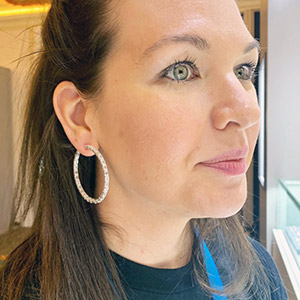
Influencers on platforms like Instagram and TikTok have garnered millions (billions, even) of followers on the web, and marketers have been reaping the rewards of the relationships they’ve been building with them.
But “influencing” as we know it is changing: Fewer individuals paint nothing but rosy pictures of a charmed life, rich with free gifts and far-off places, without a struggle in sight. Younger generations—and older ones—aren’t really buying it anymore. Certainly the impact social media has on the mental health of viewers is profound, and if the pandemic taught us anything, it’s that everyone struggles, and the more we can share of that, the better.
A recent report released by the CDC shows a concerning number of U.S. teen girls experiencing record high levels of violence, sadness, and suicide risk. While the report does not mention social media as an influence on this data, it does cite the positive difference school-based activities can make in children’s lives, which in turn would suggest less time online.
And social media platforms are taking note: TikTok recently implemented a new time limit for teens on its app—60 minutes per day for its users below age 18. Once the 60 minutes elapses, users will have to enter a passcode to decide whether to continue on the app; users 13 and under will need to consult a parent or guardian for an additional 30 minutes. Instagram is implementing controls to protect its younger users as well.
Aside from spending less time on social media, Gen Z is also helping to influence what we’re seeing there, paving the way for the new influencer, or rather, the de-influencer. Essentially, social media stars are flipping the script on what we’ve become accustomed to. Instead of telling their followers what to buy, they’re sharing what not to.
Chipping away at mass consumerism is a catalyst in this new digital trend, but there are also notes of transparency and this generation’s desire to both be real and see real on their feeds. Because viral products influence users to purchase things they don’t need—and going viral can sometimes be as simple as sending out free products and asking influencers to share positive reviews—de-influencers are debunking the frenzies over such items, sharing why certain products don’t work for them and what might be better alternatives.
“The de-influencing trend has people questioning the value and necessity of these products, which is a clear contrast from how they were once promoted and these products are inauthentic to the normal consumer’s lifestyle,” said Wendy Mei, head of corporate strategy at the neighborhood-centric app Playsee, in an article published on Digiday. The article also noted that the de-influencing trend is changing the creator economy as well as how brands and businesses influence online.
What does this mean for retailers hustling on social? Be aware of the influencer movement’s potential peak. If influencer marketing is a large part or any part of one’s strategy, a shift may be in order. Young consumers want transparency, they want honesty, and they want legitimate experiences. Obviously, as a jeweler or industry service provider, you wouldn’t want one of your products on the receiving end of de-influencing because that would indicate the reviewer thinks it’s not all it’s cracked up to be. As long as a jeweler is being authentic and representing itself and its products in a transparent way, customers and potential clients know it’s a trustworthy choice. That’s becoming an increasingly important factor in a customer’s potential to shop.
Photo: Getty Images Plus/pressureUA
Follow JCK on Instagram: @jckmagazineFollow JCK on Twitter: @jckmagazine
Follow JCK on Facebook: @jckmagazine






